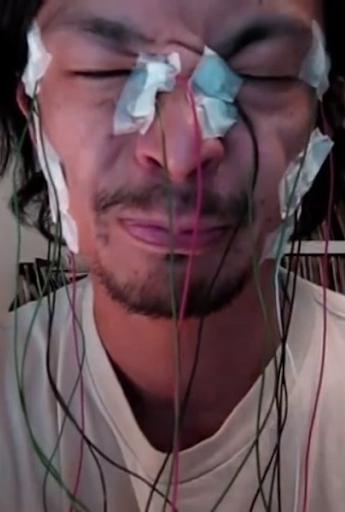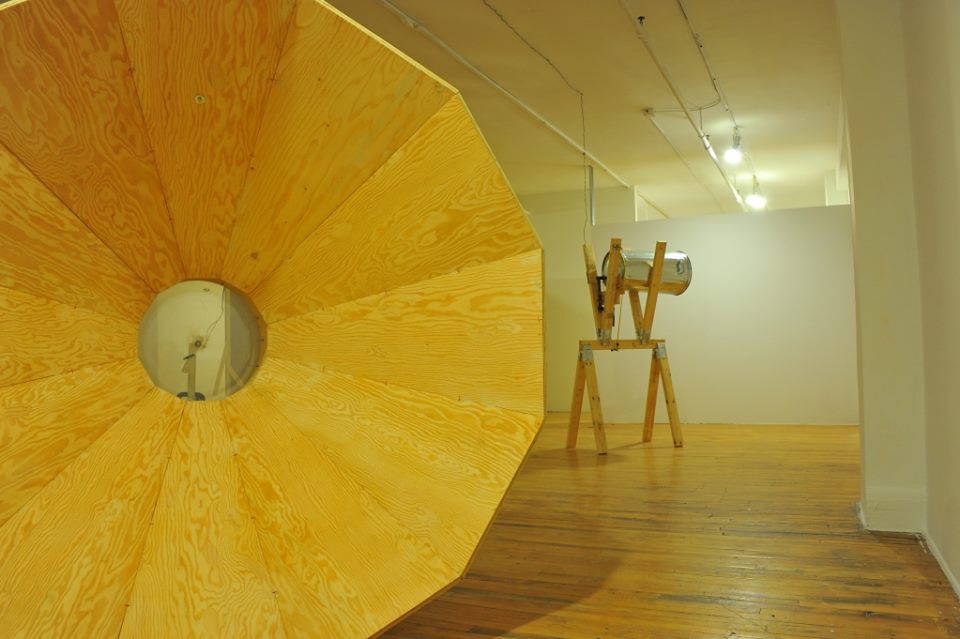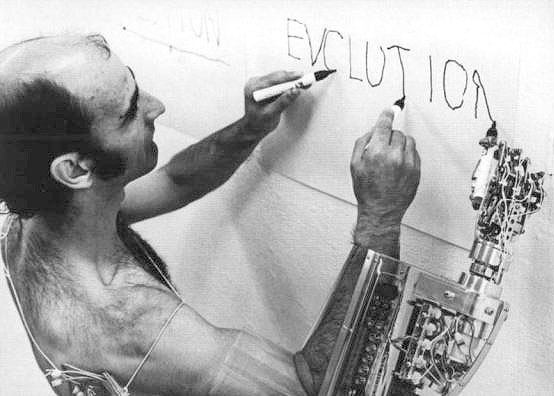Instrumentation
Alle Dinge haben eine natürliche Resonanzfrequenz. Interessanterweise deutet dies auf eine grundlegende Verbindung zwischen fast allem hin, aber lassen Sie uns auf der Ebene des Physischen bleiben. Wasser in einem Weinglas vibriert stark, wenn ein Finger über den Rand gezogen wird. Unser Körper hat Resonanzfrequenzen; Ebenso der Hefter auf meinem Schreibtisch, die Wolkenkratzer in der Innenstadt, die Brücke, die ich beim Verlassen von Montreal überquere, und die tektonischen Platten, die alles tragen. Inspiriert von dieser Resonanz ist Instrumentation eine ortsvariable, kinetische Klanginstallation. Beim Betreten des Hauptinstallationsraums hört man eine schimmernde Polyphonie aus Harmonischen, plötzlichen Crescendos und arrhythmischen Beats. Im Widerspruch zur Eleganz dieser Klänge stehen die unwahrscheinlichen Resonatoren, von denen sie ausgehen und die aus Altholz, Klammern, Eimern, Trommeln, geborgenen Fenstern und handgewickelten elektromagnetischen Spulen zusammengeschustert sind. Weitere Erkundungen zeigen einen sekundären Raum, der die Quelle der Aufführung enthält: eine Reihe kleiner mechanischer Geräte und scheinbar zufällige Schaltkreise. Ein großer Holztisch dient diesen nichtmenschlichen Darstellern als Bühne: Ein Hebel zieht eine Schnur, die an einem Elektrodenkolben in einem Gefäß mit elektrifiziertem Salzwasser befestigt ist; Das Zifferblatt eines Lichtdimmers dreht sich langsam unter der Kontrolle eines kleinen Motors. Vibrierende elektromagnetische Felder erzeugen Klavierdrähte und erzeugen Schlagimpulse in Trommeln und Metalldosen. Joghurtdeckel, die an Stöcken befestigt sind, schwanken über Lichtsensoren hin und her. Diese Elemente bilden zusammen spontan den hypnotischen Refrain von Instrumentation. Um schwingende Magnetfelder zu erzeugen, verwende ich einfache Oszillatorschaltungen, Seltenerdmagnete und billige oder handgewickelte elektromagnetische Spulen. Diese Felder aktivieren eine Reihe von Materialien wie Glasschrott, Metallgegenstände und gespannten Draht. Mit lichtempfindlichen Fotozellen in den Schaltkreisen können die Frequenzen durch Umgebungslichtpegel variiert werden, die von den mechanischen Leistungsträgern reguliert werden – motorisierte Lichtdimmervorrichtungen und automatische Lichtblockierklappen. Zusammen mit Büroklammern, Blue-Tack und Heißschmelzkleber bewahrt das behelfsmäßige Erscheinungsbild der Anordnung einen Sinn für die Experimente, aus denen sie hervorgegangen ist. Die Gesamtästhetik ist insofern offen, als die zugrunde liegende Technologie so transparent wie möglich belassen wurde. Obwohl sie auf ungewohnte Weise verwendet werden können, stammen Hinweise von vertrauten Gegenständen; wie Nähmaschinenspulen-Elektromagnete oder Mülleimer-Resonatoren. In Verbindung mit dem überzeugenden Klang bieten häusliche Teile eine unmittelbare körperliche Auseinandersetzung mit ansonsten immateriellen Phänomenen. Ein primäres Ziel, das ich als Künstler habe, ist es, Systeme zu bauen, die ich nicht vollständig verstehe, mit Verhaltensweisen, die ich nicht vollständig vorhersagen kann. In Instrumentation überlappen sich die Zyklen, synchronisieren sich und treten aus der Phase aus, wodurch gemeinsam eine endlos schwankende Tonspur erzeugt wird. Sie wurden in den USA, Europa und Asien in Auftrag gegeben – alle sind ortsspezifisch und vom umgebenden Raum und der Landschaft inspiriert.





























